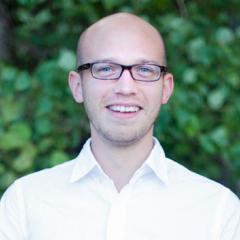About Joseph's Work
Joseph is currently a Research Scientist in Biological Sciences at Virginia Tech. He did his Ph.D. at the University of California, Santa Cruz (UCSC). His dissertation research has focused on the ecology of infectious wildlife diseases. He uses multi-disciplinary approaches to answer questions about how to best manage the impacts of introduced diseases by trying to better understand the local and global spread of pathogens. Most of his research has been working on the fungal disease of hibernating bats, white-nose syndrome. This disease is caused by the invasive fungal pathogen Pseudogymnoascus destructans. This fungus is thought to have been introduced to North America from somewhere in Europe or Asia, but the exact source is unknown. He is currently working on trying to help identify the origins of white-nose syndrome to prevent future introductions of this devastating disease. Joseph has worked at multiple scales to integrate environmental research and policy. At a local scale, he has worked with town conservation advisory councils to mitigate impacts of expansive development on endangered species habitat. He has also participated in development and implementation of the National White-Nose Syndrome Response Plan in partnership with the U.S. Fish and Wildlife Service, and other state, tribal and federal agencies. Before beginning his Ph.D., Joseph worked on other important conservation issues with the New York State Department of Environmental Conservation, the Smithsonian Center for Conservation and Evolutionary Genetics, and the Migratory Bird Center. Here, he conducted field and lab research on a variety of projects including identification of the fungus P. destructans, the influence of solar farms on the endangered San Joaquin kit fox, and the impacts of West Nile virus on bird communities. Joseph went on to earn his M.A. in Ecology and Evolutionary Biology from UCSC. During this time, he participated in the National Science Foundation East Asian and Pacific Summer Institute program to help foster collaborations with graduate students and international researchers. He used this opportunity to build an ongoing research program in northeastern China in collaboration with Northeast Normal University.
